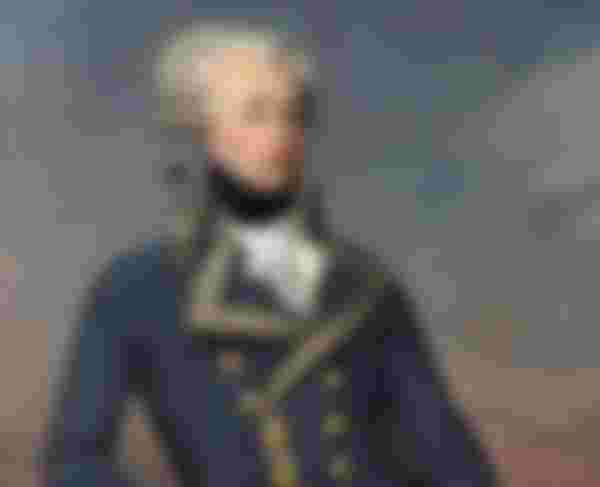Project History: September 6
THE RETURN OF THE SHIP VICTORIA TO SPAIN
September 6, 1522

Today, in the year 1522, the ship Victoria docked at the port city of Seville, Spain, with its sails torn to shreds and its timbers. It was the first sailing ship, to sail around the world.
The ship Victoria, the smallest of the five ships included in the expedition of Portuguese sailor Ferdinand Magellan, was also the only Spanish ship left from a two-year expedition around the world to successfully and safely return to its home. country. On board the ship were 18 people left behind from the original more than 270 Spanish sailors who were involved in this extraordinary mission, including the ship's commander himself, Juan Sebastian Elcano, and the Italian historian and writer Antonio Pigafetta. The ship Santiago was wrecked due to the storm while looking for any passage in southern America. The ship San Antonio secretly fled back to Spain, crossing a strait at the tip of South America. The ship Concepcion was burned as they left Cebu, while the Trinidad was captured by Portuguese ships in the Spice Islands, and sank.
On their return, they were able to bring home a large cargo of valuable and expensive spices they had gathered from the Spice Islands (now the Moluccas islands in Indonesia). Above all, the survival of the writer Pigafetta on such an expedition has been the key to revealing to the world their extraordinary and meaningful journey around the world, and their trails in every place they have visited. Meanwhile, no one knows what happened to Enrique, the Malay slave who served as Magellan's interpreter, after they left the Philippines.
Sebastian Elcano, who was one of Magellan's captains who succeeded him after he was assassinated in the Philippines, who was also one of the leaders in the uprising against his superior in the middle of their voyage, was awarded a unique shield with engraved which are the Latin words “Primus Circumdedisti Me”, which means “I was the first to circle you”, in recognition. Elcano died a few years later and Victoria disappeared on her last mission.
Magellan's expedition aimed to find an alternative route to the Spice Islands by sailing west to east. Although Magellan was dead his extraordinary mission proved that the world is round and all the oceans are interconnected.
DESTROYED THE REAL COMPANIA DE FILIPINAS
September 6, 1834

The Philippines followed the Asian countries that first opened its doors to international trade, when the Real Companía de Filipinas (Royal Company of the Philippines) was finally abolished by the Royal Decree of Queen Regent Maria Christina de Borbon today. in 1834. With the eventual dissolution of the Real Companía, Spain lost complete control of the Philippine economy as well as the restrictions imposed by Spain on Philippine trade with various parts of the world.
Manila's large ports were first opened to international trade, for foreign traders from other Asian countries such as China, America and European countries such as the United Kingdom. The opening of Manila to international trade has enabled the growth of methods of exchanging products, such as modern steamships. Local industries such as sugar, hemp and tobacco flourished, with sugar being the most widely exported product in global trade. A series of ports were also opened for international trade, such as the ports of Zamboanga, Sual in Pangasinan and Iloilo in 1855.
Governor-General Jose Basco y Vargas founded the Real Companía de Filipinas on March 10, 1785 by virtue of the Royal Decree of King Carlos III of Spain. The main purpose of the said company was to establish economic relations between the Philippines and other Spanish colonies and other colonialist countries. The said company also aims to grow the agricultural industry in our country and also introduce new agricultural products to the said industry.
But despite the incentives, the company failed to accomplish its two main objectives which can probably be attributed to the following reasons:
• The Spanish merchants, who preferred the galleon trade where they made more profits, did not fully cooperate with the company;
• The company did not trade directly with Japan, China, and India. It was therefore still necessary to buy products through merchants in Manila, which resulted in higher prices of the products as compared to the price in their country of origin;
The company is not well managed because the officers are busy with activities not connected to the improvement and growth of the company; at
Foreign ships, instead of company ships, were used to transport products to Manila.
Because the company failed to implement its programs here in the Philippines, the Real Compania de Filipinas was eventually dissolved.
GENERAL GILBERT DU MOTIER, MARQUIS DE LAFAYÉTTE WAS BORN
September 6, 1755

Considered one of the great but controversial personalities in French history was the French aristocrat and so-called “Hero of the Two Worlds” General Marie-Joseph Paul Yves Roch Gilbert du Motier, Marquis de Lafayette, or simply Marquis de Lafayette or Lafayette. Today is his 266th birthday, born in 1755 in the town of Chavaniac, province of Haute-Loire in southern France, and from the royal line of generals. He was the son of French army colonel Gilbert Paulette du Motier, Marquis de Lafayette and Marie Louise Jolie de Rivière.
Lafayette was orphaned early, when her father died in battle while her mother died of illness, while she was studying in Paris. He inherited the wealth of his family and he also decided to follow in his father's footsteps. At the age of 13 he was officially in the Musketeers of the King.
Lafayette married early at the age of 18 the daughter of a nobleman Marie Adrienne Françoise de Noailles in 1774, and at that age, she wanted to prove herself as a great general. Lafayette ventured to America to assist in the American fight against British occupation, and he became Major General in the American army under George Washington, until the Americans won with the help of French allies in 1781.
Major General Lafayette returned as a hero to France. Carrying the liberal ideologies championed in America, he tried to apply them to his country paralyzed by the ongoing social crisis. He became a member of the Second Estates in the Estates-General, but he was one of the nobles who sympathized with the struggles of the Third Estate. He supported the French Revolution and the liberal ideas it promoted, and he accepted the position of Chief general of the National Guard, what became the army of revolutionary France, with the rank of Lieutenant-General. With the help of the American ambassador of France and his friend Thomas Jefferson, Lafayette wrote the Declaration of Human Rights, adopted in August 1789, and as the trusted guardian of the Royal family of France, he mediated the French citizens who wanted Louis XVI returned to Paris from Versailles in October 1789. He also led the first celebration of Quatorze Juillet in July 1790.
Although he became popular for his military achievements, it was his political views that brought about the damage to his reputation. He supported the Constitutional monarchy and the king’s stay in power, something the French radicals who demanded full independence from the monarchy did not want. General Lafayette was blamed for Louis XVI's attempted escape from France in June 1791, and he was further damaged in the public eye when he led the violent expulsion of demonstrators on the Champs de Mars in Paris in July 1791. He was later criticized. General Lafayette the radicalism of the revolution he had previously supported, while radicals such as George Danton and Maximilien Robespierre regarded him as a traitor to the revolution and ordered his arrest. He and his family attempted to leave France for America in 1792, but he was captured by the Austrians in the Austrian Netherlands (now Belgium), and five years were imprisoned. He was freed with the help of Napoleon Bonaparte when he captured Austria in 1797 and offered him his new French government, but Lafayette refused. He avoided any political affiliation with France, and in 1807 his wife died. When Napoléon was ousted as Emperor of France and the Bourbon monarchy returned, Lafayette returned to politics when he served as a member of the Chamber of Deputies until 1834. He was also honored by President James Monroe of the United States, for his service to in America against the British.
When the French revolution broke out again against King Louis-Philippe in 1830, the then senior veteran of the American and French Revolutions again supported it. On May 20, 1834, the so-called "Hero of the Two Worlds", and one of the National Heroes of America and France, died in Paris, France at the age of 76 due to pneumonia. General Marquis de Lafayette was buried in Picpus Cemetery with full military honors.
UNITED STATES PRESIDENT WILLIAM MCKINLEY SHOT
September 6, 1901

While at the Pan-American Exposition in Buffalo, New York state in the United States, American President William Mckinley was shot on this day in 1901. 28-year-old American anarchist Leon Czolgosz shot the 58-year-old President at close range with his Caliber 32 revolver, while present at the said exhibit.
President Mckinley was at the Pan-American Exposition that day to show visitors in attendance exhibits such as nine tons of elephants to the electric generator powered by Niagara Falls. The President also held a simple meet-and-greet for those who wanted to see and get lucky, and the assassin himself, who even hid his murder weapon in his handkerchief, joined in the meet-and-greet. Although security was tight at the meet-and-greet with President McKinley, the aftermath of the gathering was not expected. The assassination attempt on President McKinley was thwarted, and he was overwhelmed by almost everyone present. President McKinley was taken to a hospital near the exhibit, but sustained serious gunshot wounds. The President's condition worsened, as a result of a lot of blood lost to him. Just over a week later, the 25th President of the United States passed away. He was immediately replaced by his Vice President Theodore Roosevelt. Condolences poured in from the international community for the assassinated President of America.
At his trial on Sept. 23, Czolgosz proudly admitted his crime, and said he did so for the sake of the workers. Czolgosz also said his assassination of President Mckinley was voluntary, and since Sept. 5 he has been following his victim on the exhibit. He was sentenced to death by electric chair, for murder just three days later. Oct. 29 of the same year the culprit was electrocuted to death in Auburn Prison in New York.
President William Mckinley was the third President of the United States to be assassinated, along with Abraham Lincoln and John F. Kennedy. President McKinley served from March 1897 under the Republican Party, and he led America at a time when America's emergence as an imperialist and powerful nation had begun, overthrowing Spain as a powerful colonialist in Asia, and conquering it as a unique its colony in Asia was the Philippines in 1898.
References:
Nao Victoria Foundation (n.d.). The life of a boat that traveled round the world. Google Arts & Culture. https://artsandculture.google.com/exhibit/the-life-of-a-boat-that-travelled-round-the-world-fundacion-nao-victoria/-ALSMw_nbf9aJg?hl=en
Wikipedia (n.d.). Juan Sebastian Elcano. https://en.m.wikipedia.org/wiki/Juan_Sebasti%C3%A1n_Elcano
Wikipedia (n.d.). Magellan expedition. https://en.m.wikipedia.org/wiki/Magellan_expedition
Agoncillo, T. A., & Dare, F. B. (2010). Philippine History, expanded and updated edition. Quezon City: C&E Publishing, Inc.
Slideshare https://www.slideshare.net/DhiiAnne/opening-of-the-port-to-world-trade-114224981
The Kahimyang Project (n.d.). Today in Philippine history, March 10, 1785, the Real Compania de Filipinas was established. https://kahimyang.com/kauswagan/articles/1612/today-in-philippine-history-march-10-1785-the-real-compa-a-de-filipinas-was-established
Biography.com Editors (2020, June 30). Marquis of Lafayette. The Biography.com website. https://www.biography.com/political-figure/marquis-de-lafayette
Wikipedia (n.d.). Gilbert du Motier, Marquis of Lafayette.
https://en.m.wikipedia.org/wiki/Gilbert_du_Motier,_Marquis_de_Lafayette
Andrews, E. (2018, September 3). The assassination of President William McKinley. HISTORY. https://www.history.com/news/the-assassination-of-president-william-mckinley
Wikipedia (n.d.). https://en.m.wikipedia.org/wiki/William_McKinley



